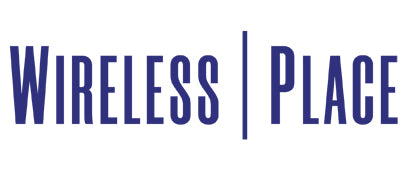Be the first to hear about the newest phones!

The Perfect Charging Speed for your Cell Phone
In the dynamic world of technology, the quest for the perfect cell phone charging speed is akin to finding the holy grail of battery management. As smartphones become increasingly integral to our daily lives, the demand for efficient and swift charging solutions has never been more pressing. The perfect charging speed is a delicate balance of rapid energy replenishment, battery longevity, safety, and user convenience. This composition delves into the various facets that constitute the ideal charging speed for a cell phone.
Understanding Charging Speed
Charging speed is typically measured in watts (W), derived from the product of voltage (V) and current (A). Modern smartphones usually charge at rates between 5W to 65W, with some cutting-edge models pushing the boundaries to 100W or more. However, achieving the perfect charging speed is not merely about pushing for higher wattage; it’s about harmonizing multiple factors to ensure optimal performance and user satisfaction.
Speed Versus Battery Health
One of the primary considerations in determining the perfect charging speed is the impact on battery health. Lithium-ion batteries, the most common type in smartphones, degrade over time due to chemical reactions. Fast charging accelerates these reactions, potentially reducing the battery’s lifespan. Hence, while manufacturers strive for faster charging, they must also implement technologies that mitigate adverse effects on battery health.
The optimal charging speed would thus be one that balances swiftness with minimal impact on battery degradation. Research suggests that moderate speeds around 15W to 30W can provide a satisfactory compromise, offering relatively fast charging times while preserving battery health. For instance, a 20W charger can typically charge a phone to 50% in about 30 minutes, which is generally sufficient for most users' daily needs without significantly harming the battery.
Safety Considerations
Safety is paramount when discussing charging speeds. High wattage charging generates more heat, which can pose safety risks such as overheating, short circuits, or even battery explosions in extreme cases. To mitigate these risks, manufacturers incorporate various safety mechanisms like thermal sensors, circuit breakers, and adaptive charging algorithms that adjust the charging rate based on real-time battery conditions.
The perfect charging speed must therefore be one that includes robust safety features, ensuring that the device remains within safe temperature limits and preventing any potential hazards. For example, incorporating smart charging technologies that dynamically adjust the current and voltage based on the battery's temperature and health status can significantly enhance safety while maintaining efficient charging speeds.
User Convenience and Experience
User convenience is a critical aspect of determining the perfect charging speed. In our fast-paced world, the ability to quickly recharge a smartphone can be a significant advantage. However, the perfect speed should also consider practical aspects such as the availability of charging infrastructure and the typical usage patterns of users.
Wireless charging, for instance, offers unparalleled convenience despite generally slower speeds compared to wired charging. An ideal charging solution would seamlessly integrate both fast wired and efficient wireless charging options. A speed of around 10W for wireless charging and 20W for wired charging strikes a good balance, providing reasonable speed and convenience for different scenarios.
Moreover, the implementation of charging pauses during periods of inactivity, such as overnight, can help in maintaining battery health without compromising user convenience. Adaptive charging technologies that learn user habits and optimize charging patterns accordingly can offer a near-perfect solution, combining speed, convenience, and battery preservation.
Technological Innovations
Technological advancements continue to redefine the boundaries of charging speeds. Innovations such as graphene batteries, solid-state batteries, and advanced cooling systems hold the promise of significantly faster and safer charging. Graphene batteries, for example, offer higher conductivity and lower resistance, allowing for faster charging without the associated heat issues. Similarly, solid-state batteries promise greater energy density and safety, potentially revolutionizing the concept of perfect charging speed.
Moreover, the development of ultra-fast charging standards like USB Power Delivery (USB-PD) and Qualcomm Quick Charge has pushed the envelope further. These technologies not only enhance charging speeds but also ensure compatibility across various devices, contributing to a more standardized and user-friendly charging ecosystem.
Environmental Impact
In the broader context, the perfect charging speed must also consider its environmental impact. Efficient charging solutions that consume less energy and utilize eco-friendly materials can contribute to sustainability. Fast charging technologies that prioritize energy efficiency and reduce waste through durable and long-lasting batteries align with global efforts to minimize environmental footprints.
Conclusion
The perfect charging speed for a cell phone is not a singular, fixed value but a harmonious blend of speed, safety, battery health, user convenience, technological innovation, and environmental sustainability. It is a dynamic equilibrium that evolves with advancements in technology and changing user needs. As we continue to innovate, the quest for the perfect charging speed will undoubtedly lead to more sophisticated and holistic solutions, ultimately enhancing our interaction with one of the most ubiquitous devices of our time.
Check out our charger: 25W USB C Wall Charger Super Fast Charging Block


Leave a comment